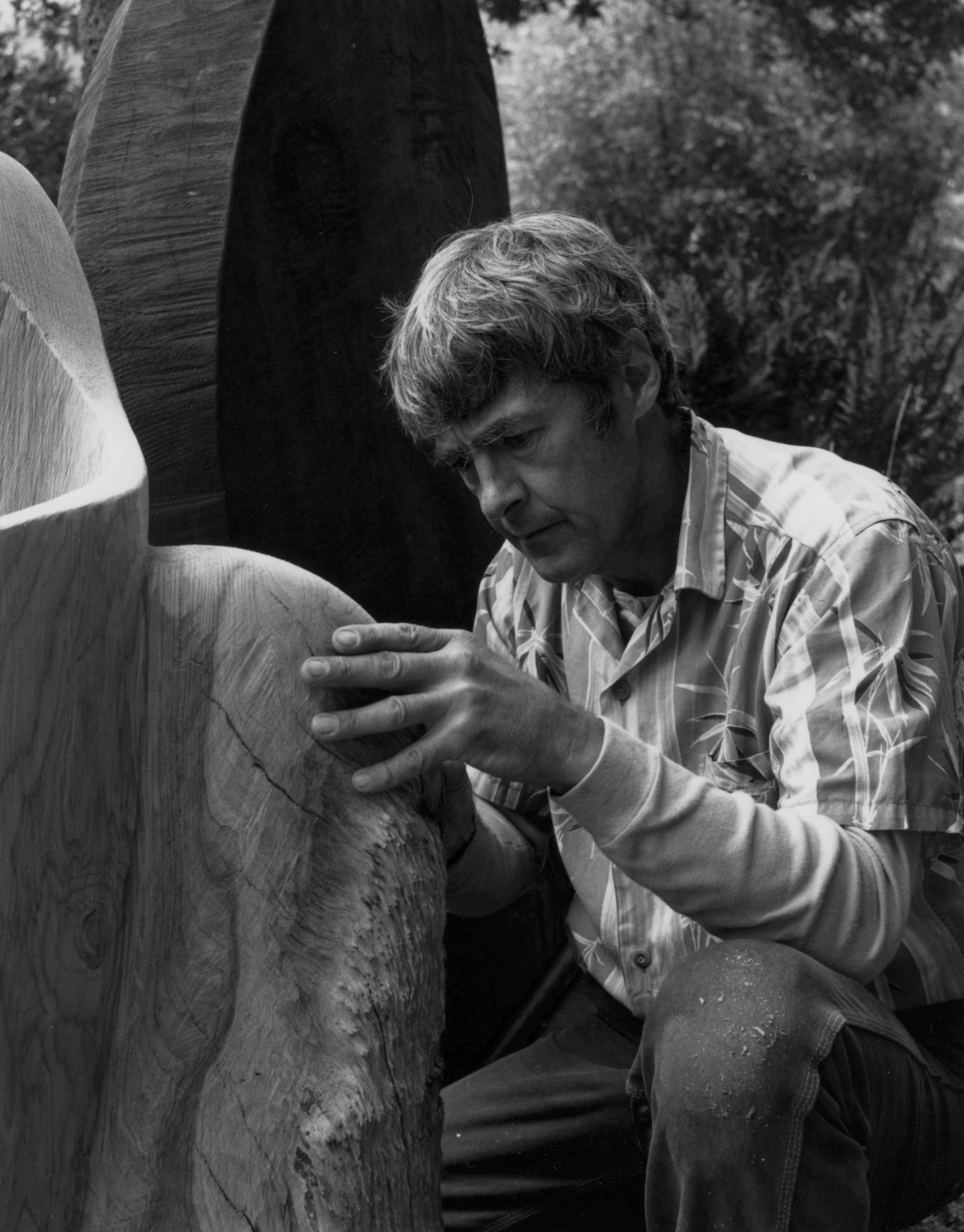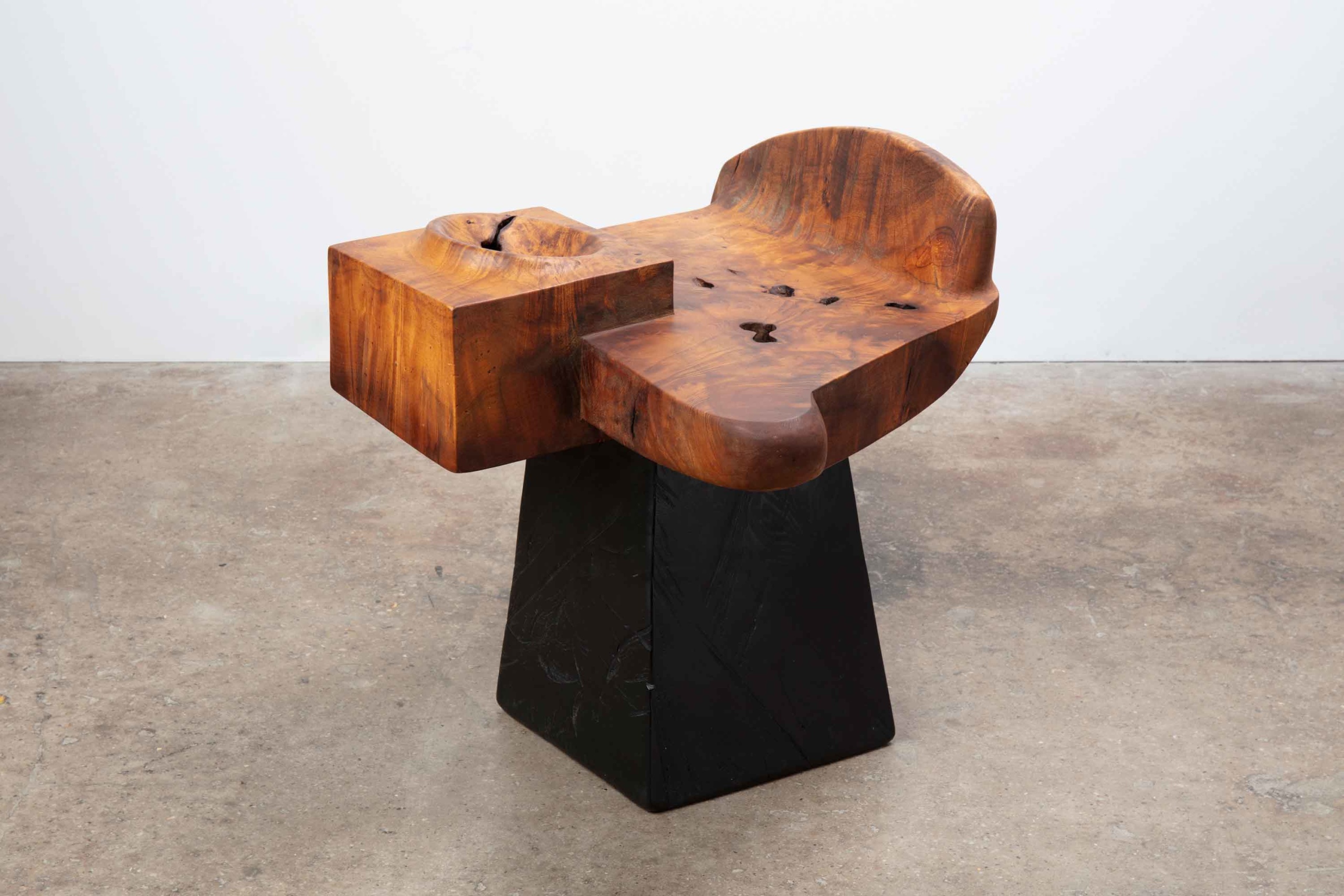
At a moment in time when our collective culture is returning to nature to retreat and take cover from the pandemic, a resurfacing of artist JB Blunk’s prolific work feels fitting. The late artist, whose work enjoys a cult-like following in his native Northern California, never sought the spotlight, preferring to focus on making rather than promoting. Now, he is finally getting his due with his first-ever exhibition on the east coast, at Kasmin Gallery in New York.
Blunk, whose practice is seamlessly spread across a multitude of media—from ceramic and wood to stone and clay; from jewelry and sculpture to paintings and furniture—lived and worked off the grid in a home he built entirely by hand upon a hill in Inverness, California, a small enclave just north of San Francisco. After beginning his practice in Japan, where he studied ceramics, encouraged by lifelong friend Isamu Noguchi, Blunk returned to California and began experimenting with wood, and later stone. He carved his first chair from a single piece of redwood as a gift to his friend, the painter Gordon Onslow-Ford, who gave Blunk the piece of land he would come to connect with profoundly over the coming decades. It was there he built his home—all of it, from the doors and shelving to the sinks and furnishings—and raised his family, living off of the land before it was en vogue to do so.

The show at Kasmin brilliantly offers a multidimensional look at the breadth of work Blunk made, his hand evident as a constant thread in each of his various techniques and mediums. With a healthy range of stone sculptures, wood furniture and ceramics—some decorative, while others functional—the show manages to give an inclusive survey of his practice, introducing his work to a wider audience. Though Blunk made art in the 1960s near San Francisco and came to be seen as an emblem of the counterculture movement, he never saw himself as a part of it. He preferred instead to focus on his work: collecting burls of redwood from nearby beaches and parks and fashioning them into sculptures and furniture with his chainsaw, which was his main tool. The clay, too, he dug up locally for his ceramic pieces.

Blunk’s legacy and prolific body of work is being reintroduced to the world by way of his daughter Mariah Nielson, an architect, curator and director of the JB Blunk Foundation. In addition to helping organize the show at Kasmin, Nielsen has independently published a comprehensive monograph of her father’s work with Dent-De-Leone. Featuring essays, interviews and archival images, the book offers a multidimensional look at the artist. The monograph was made with tenderness and delicate attention. It was important to Nielsen that it capture her father’s work as accurately as possible, so the graphic designer came out to California to stay at Blunk’s house and get a proper feel for the book’s subject. With careful consideration, it took weeks to select the right feel of the paper stock, and other physicalities. Also included in the book is a reading list, a compendium of titles the artist kept on his shelves that informed his practice. He was not a man of many words, but the list of titles offers another vantage point from which to understand his practice.

For Nielsen, who lives in the family home and whose husband works in Blunk’s studio, it’s thrilling to share her father’s work, in exhibitions and on the page, beyond where it was made. Pieces she grew up with are now on pedestals; works gifted to family friends now sit perched on the gallery floor. “It feels really good to see his work out in the world; I know my father would have wanted this. He always said none of his work was precious, and some of it was meant to be handled,” she tells Cultured. “Seeing his work on white pedestals is the antithesis of what I’m used to,” she says with a laugh, “I think he would chuckle seeing that.”
JB Blunk’s solo exhibition is on view at Kasmin Gallery by appointment through November 7, and a newly released second edition of his monograph is available for purchase here.










 in your life?
in your life?

